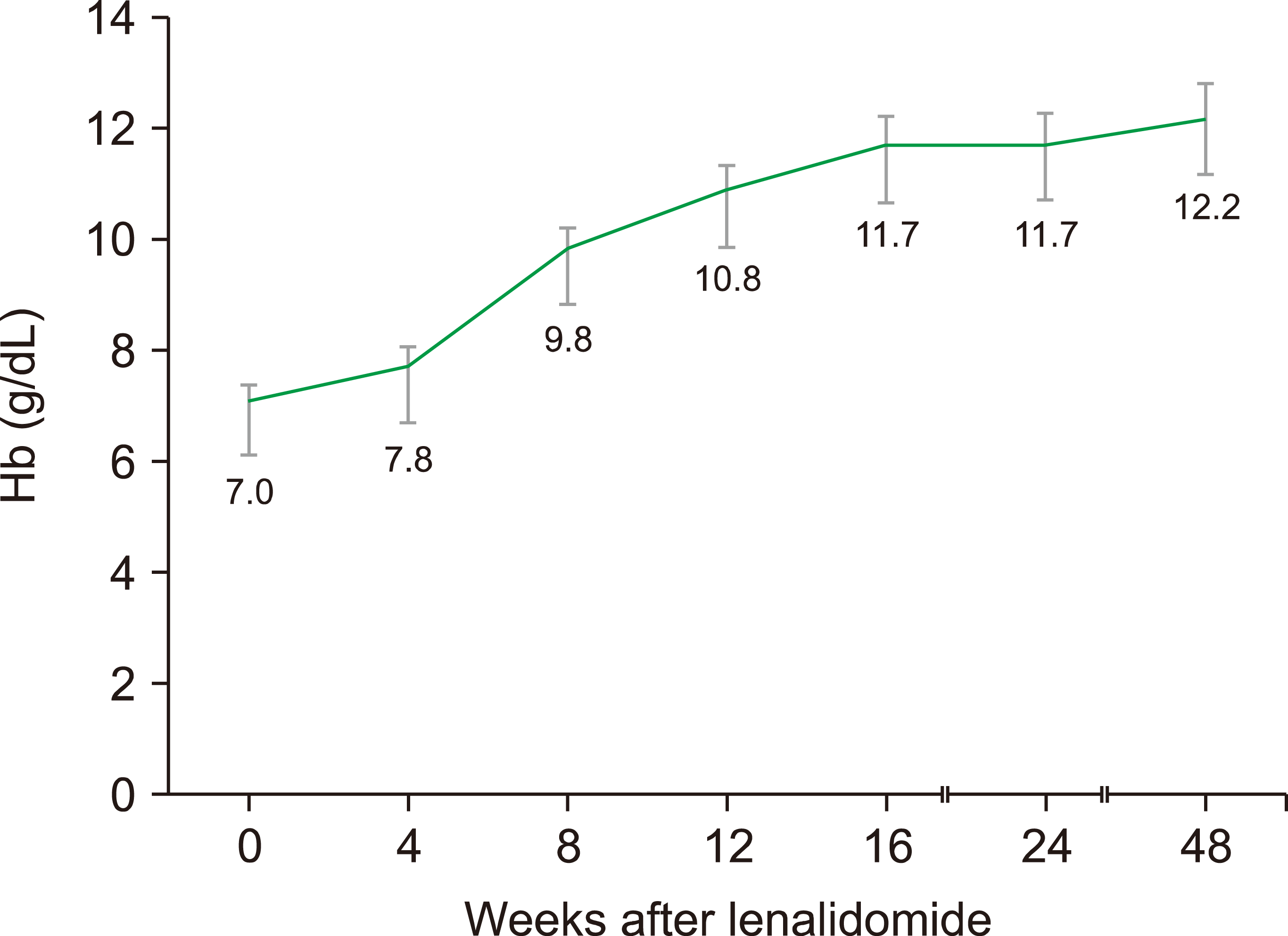1Department of Internal Medicine, Seoul National University College of Medicine, Seoul National University Hospital, Seoul, Korea
2Department of Hematology and Oncology, Ulsan University Hospital, University of Ulsan College of Medicine, Ulsan, Korea
3Department of Internal Medicine, Daegu Catholic University School of Medicine, Daegu Catholic University Hospital, Daegu, Korea
4Division of Hematology-Oncology, Chung-Ang University Hospital, Seoul, Department of Internal Medicine, Jinju, Korea
5Gyeongsang National University Hospital, Gyeongsang National University School of Medicine, Jinju, Korea
6National Health Insurance Service Ilsan Hospital, Goyang, Korea
7Ewha Womans University Mokdong Hospital, Ewha Womans University College of Medicine, Seoul, Korea
8Yonsei University Wonju College of Medicine, Wonju, Korea
9Pusan National University College of Medicine, Pusan National University Hospital, Busan, Korea
10Division of Hematology, Department of Internal Medicine, Yonsei University College of Medicine, Seoul, Korea
11Department of Internal Medicine, Dongtan Sacred Heart Hospital, Hallym University College of Medicine, Hwaseong, Korea
12Division of Oncology and Hematology, Department of Internal Medicine, Jeonbuk National University Hospital-Jeonbuk National University Medical School, Jeonju, Korea
13Department of Internal Medicine, Kangwon National University College of Medicine, Kangwon National University Hospital, Chuncheon, Korea
14Division of Hematology, Gachon University Gil Medical Center, Gachon University College of Medicine, Incheon, Division of Hematology-Oncology, Department of Internal Medicine, Seoul, Korea
15Korea University Guro Hospital, Seoul, Korea
16Dong-A University College of Medicine, Dong-A University Hospital, Busan, Korea
17Yeungnam University College of Medicine, Daegu, Department of Internal Medicine, Jeju, Korea
18Jeju National University Hospital, Jeju National University School of Medicine, Jeju, Korea
19Inje University Haeundae Paik Hospital, Busan, Korea
20Seoul St. Mary’s Hematology Hospital, College of Medicine, The Catholic University of Korea, Seoul, Korea
21University of Ulsan College of Medicine, Asan Medical Center, Seoul, Korea




 PDF
PDF Citation
Citation Print
Print



 XML Download
XML Download